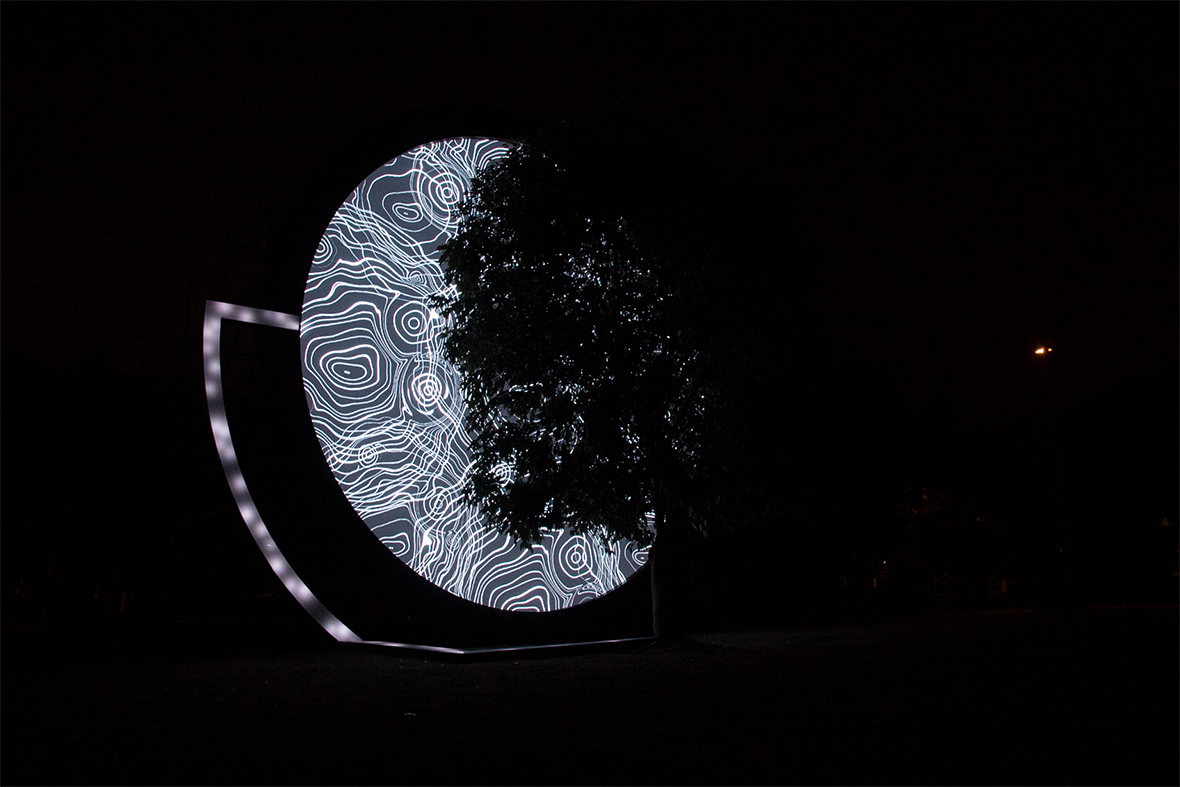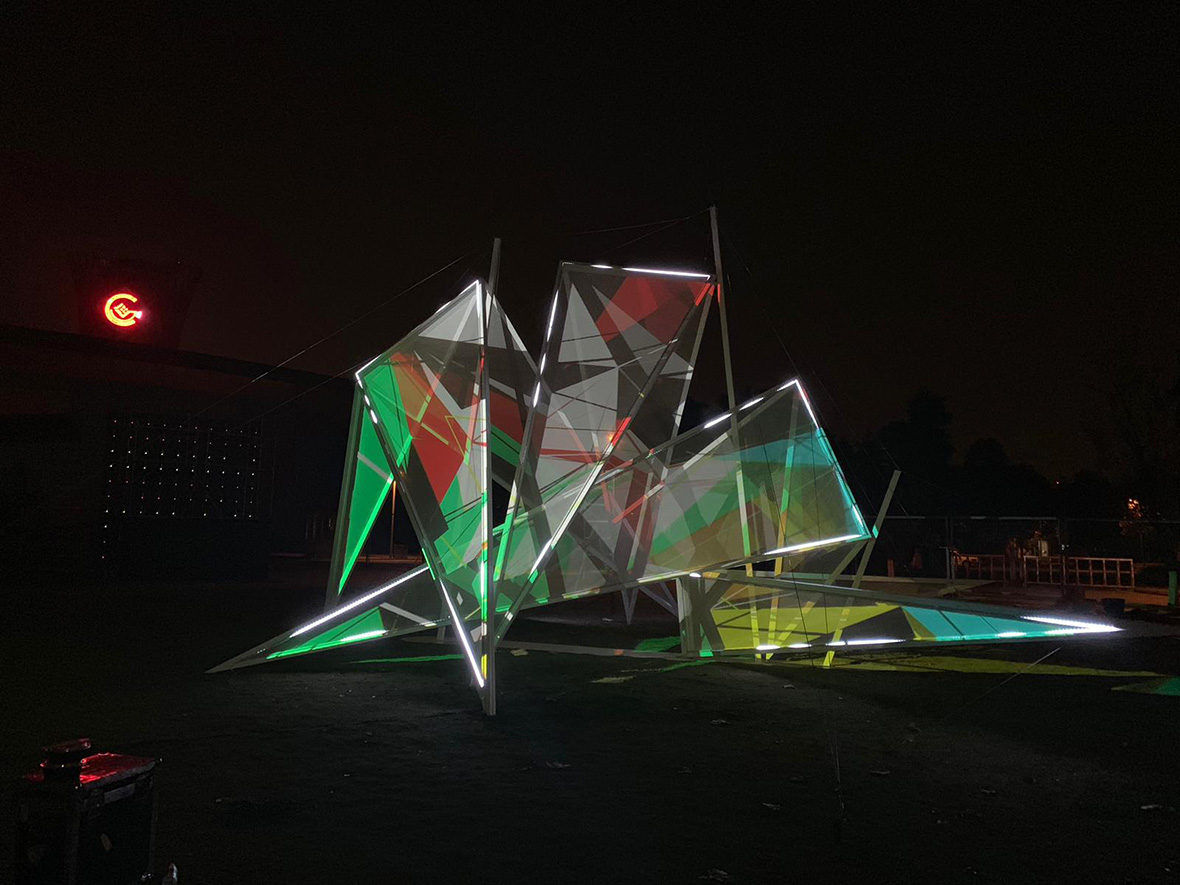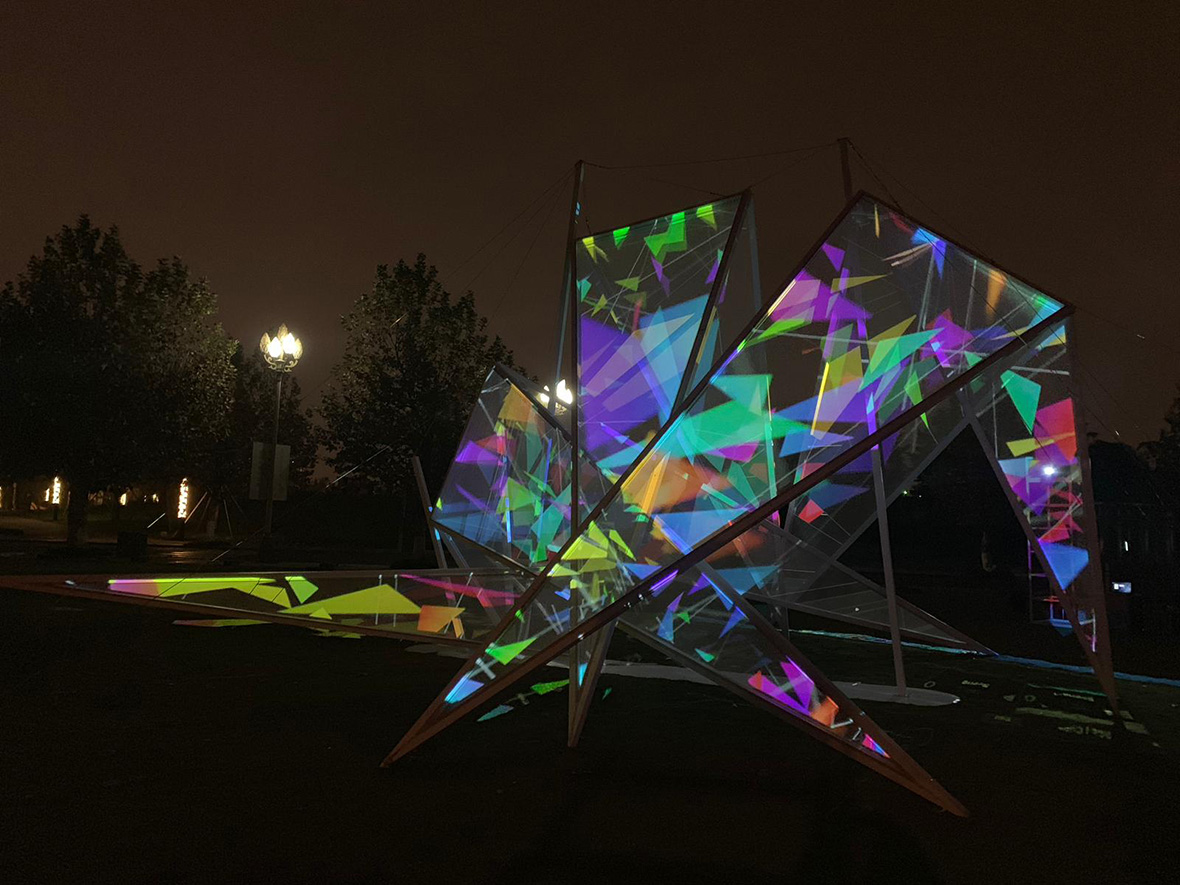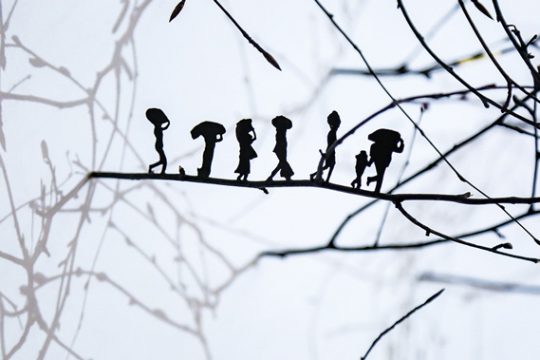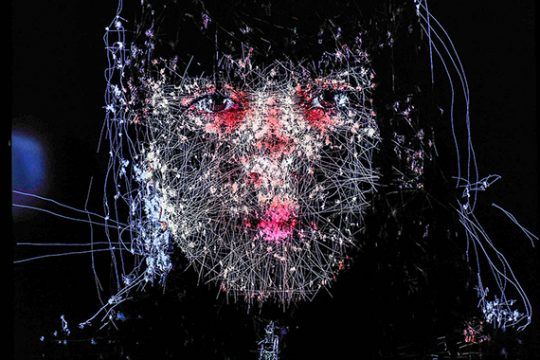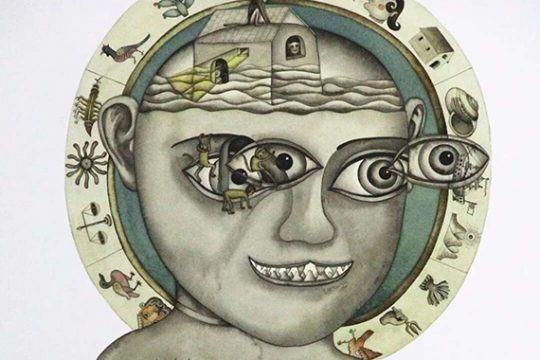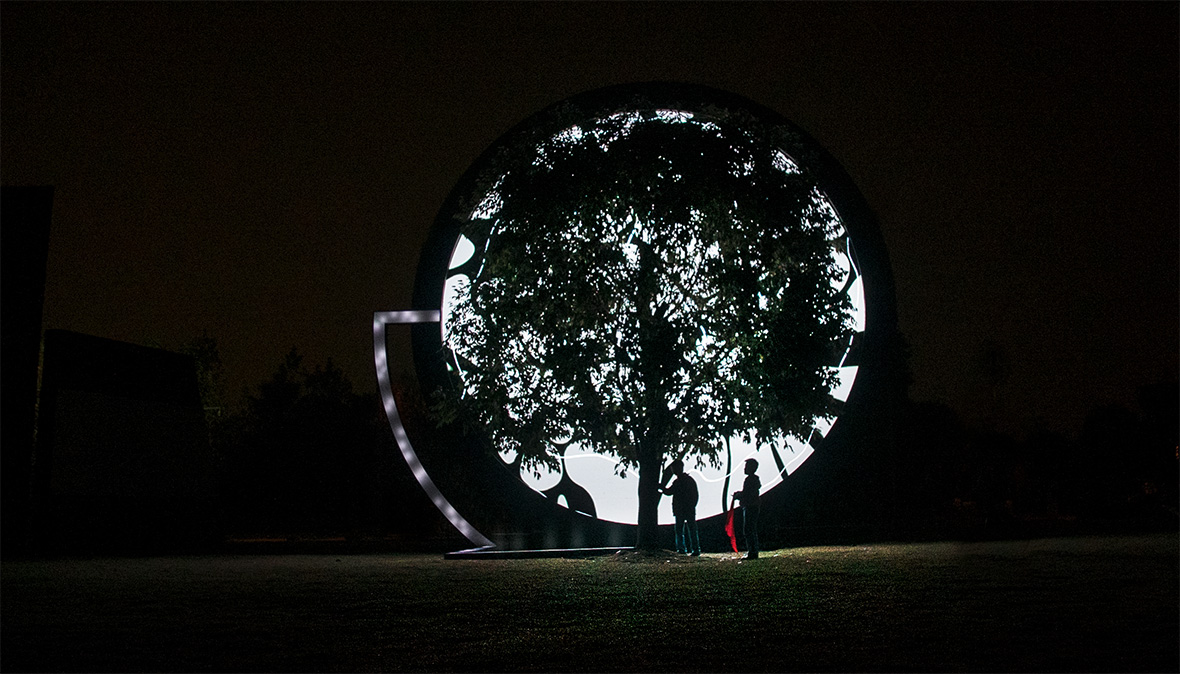
Lumen Prize Winner 2017 /2017 年英国流明数码艺术奖冠军
What happens when “intangible cultural heritage” meets contemporary art, when digital installations enter the urban landscape? The results are nothing short of magical.
Known for its rich history, Chengdu, the “city of flowers and brocade” and capital of Sichuan province, is holding an exhibition of public art centered on cultural heritage. Light Up Bashu Lumen Prize featured exhibition puts paper cutting, embroidery, Chinese opera, traditional handicrafts and other aspects of “intangible” culture into contact with digital art. (“Bashu” is another name for Sichuan.) With rare ambition, the show aims to create a unique “artistic dialogue across space and time” and bring the public to the intersection of tradition and contemporary art. The exhibit will also introduce international artists to China’s heritage and bring the essence of “Bashu culture” to the world stage.
We recently interviewed four of the exhibitors, along with the Guan Huijun, co-founder of the curatorial team Here Your Art, Asia exhibition manager of Lumen Art Project, to get a look at the convention-busting works that these international artists with their culturally diverse backgrounds have created.
当“非遗”传统撞上当代艺术,当数码装置搬进城市景观,会造就出怎样的一番奇景?
以“花重锦官城”闻名的四川省首府成都,基于其悠久的文化历史打造的非遗主题公共艺术展览:“巴蜀之光”暨英国流明数码艺术大奖中国成都特展,就将剪纸、刺绣、戏剧、传统制造技艺等 “非遗” 文化与当代数码艺术结合,以空前之势形成一场独特的 “超时空” 艺术对话,既把普罗大众纳入到半传统半当代的语境中去,也让国际艺术家了解中国非遗,并向世界传递 “蜀地文化” 的精髓。
最近,我们采访了本次参展的 4 位艺术家及其策展团队 Here Your Art 的联合创始人即英国流明数码艺术奖项亚洲展览总监管蕙珺,来看看这些来自不同的国度、拥有不同的文化背景的他们,在此次为中国“非遗”传统文化为母题展览中,所创作出的超越惯常经验的作品,和其所表达的丰富而灵活的形式及内涵。
Why did you choose to showcase this aspect of China’s intangible culture?
Guan Huijun: China’s cultural heritage, and Sichuan’s in particular, has a distinctive charm and a rich historical significance. In today’s rapidly developing cities, it’s a challenge to get the public, especially young people, interested in understanding, studying, and passing on traditional forms of culture, and that’s why we chose intangible heritage as our theme. Digital art, meanwhile, is emblematic of the internet age—it’s a new force that lets us keep pace with the times. We were thinking: can we use an up-to-date means of expression, something that has a certain uniqueness and memorability, to increase local connections so that everyone can better understand and participate?
Thijs Biersteker: My piece is centered on trees. Nature has always been a very important theme in Chinese art. From Li Cheng to Fan Kuan, trees have been central. As an artist I use technology as my paint to weave together art, data and nature.
Stefan Reiss & Alexander Janke: We chose to focus on kite making. The kite was invented by two of China’s great minds, the philosopher Mozi (470-391 BCE) and the engineer Lu Ban (444-507 BCE). Mozi lived a century later than Confucius and wrote about the use of kites in China during his lifetime. At first kites were mainly, though not only, used for military purposes, e.g., for measuring distances, calculating wind power and direction, and lifting fireworks or observers.
Our main interest in the kite comes from the fact that it’s Chinese in origin and was a philosophical invention put to military uses. Over the centuries it spread out over the globe and was used for different activities, from sports and leisure to religion.
Lien-cheng Wang: I wanted the elements I chose to relate to people’s lives and to cut across time and space. So I chose four themes that could do that: “Nature,” “Humanity,” “Food,” and “Animals.”
为什么会选择(这一项)非遗文化作为母题?
管蕙珺: 中国的非遗文化,特别是四川的非遗文化,是特别有韵味和历史传承厚重感的文化标杆。在急速发展的城市里,如何让大众、年轻人更愿意了解学习和传承,是我们选择这个文化母题的初衷。而数码艺术,则是在互联网时代标志性的产物,是与时俱进快速迭代的新力量。我们一直在思考,是否能用紧跟时代的表达方式,带着一定的独特性和记忆度,增加本地链接,让大家更好地理解和参与进来。
泰斯·比斯克: 我的作品是“自然之声”,以树为主题。大自然一直是中国艺术中一个非常重要的主题。从中国画家李成(晚唐)到范宽(宋朝),树木在他们的作品中都有举足轻重的地位。而我则用数码技术把艺术、数据和大自然交互起来。
斯蒂芬·瑞斯和亚历山大·扬克: 我们选择的是“风筝”这项非遗文化作为创作的母题。风筝是中国哲学家墨子和鲁班的发明。墨子比孔子晚出生一个世纪,他一生都在宣扬风筝的用途。在发明风筝之后,它们不仅用于军事目的,例如测量距离、计算风力和方向以及举起烟火或观察员。这是一种哲学上的发明,几个世纪以来,它遍布全球,用于不同的活动,从体育、休闲到宗教意义。
王连晟: 我希望所选择的元素是更贴近人们的生活,是具有超越时间性的。所以我选择四个”自然”、”人文”、”食物”、”动物” 贴近人们的元素做为发展。
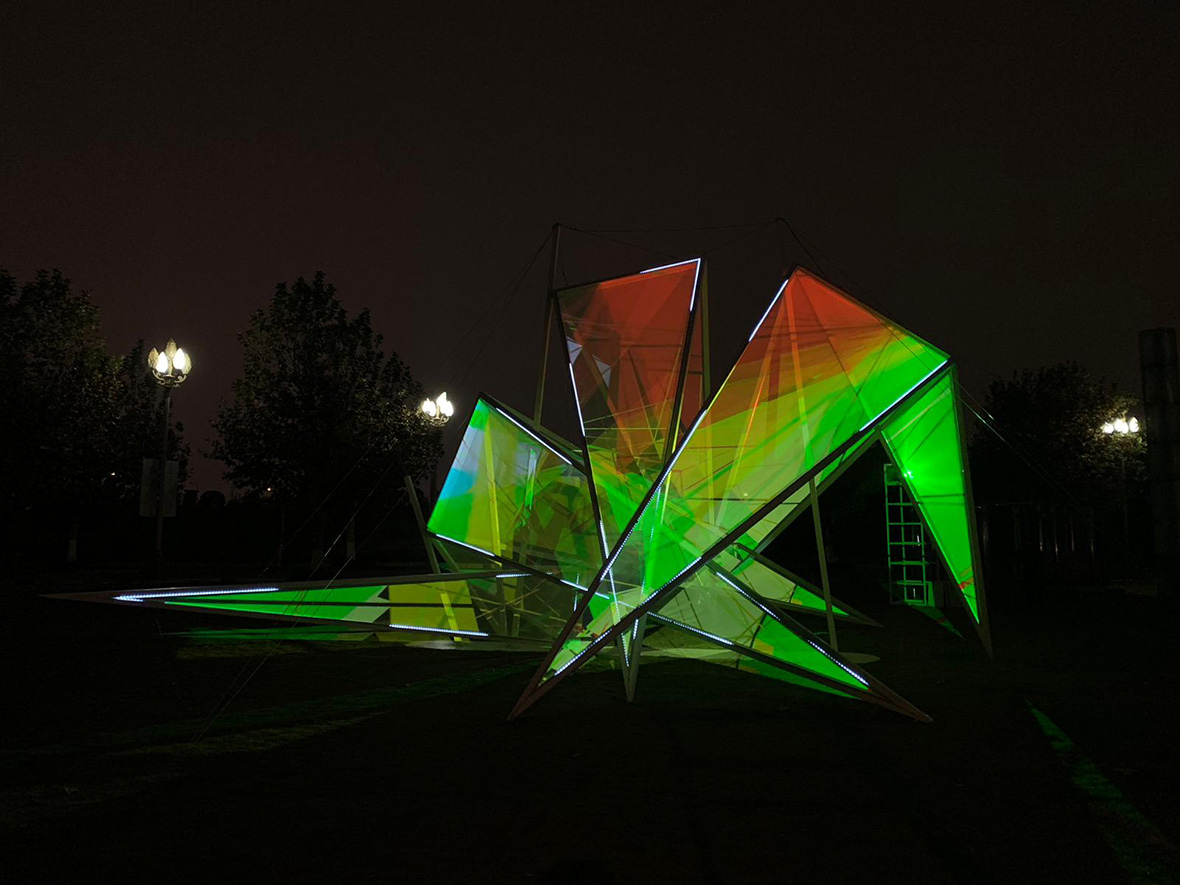
Stefan Reiss is Lumen Prize Finalist 2016 2016 年英国流明数码艺术奖艺术家
What do you think is most interesting about your piece?
Thijs Biersteker: Just as a tree creates a tree ring every year, with Voice of Nature we create a tree ring every second. We do this using sensors and data points, showing people the tree’s state of being in real time. This immersive audio-visual installation is also interactive: it responds to the people surrounding and touching it, creating a connection between the art piece, people, and nature.
Stefan Reiss & Alexander Janke: In our eyes, the combination of haptic materials (a sculpture with made of steel, gauze, and strings) and projection and light is very unique. What we try to achieve is a fusion of sculptural installations—with a strong connection to the tradition of Russian, French and German constructivism and minimalism—and contemporary digital interventions with 3D and 2D programming and animations. And we even added LEDs to this advanced art piece.
Lien-cheng Wang: My work is a moving light sculpture titled Four Scenes of Shu Dao. (Shu Dao can roughly be translated as the “dao” or “way” of Sichuan.) It has four parts. The first, “Nature,” is an image of a bamboo grove, the sun and the moon; the second sculpture, “Humanity,” showcases Chinese totemic symbols and the art of bian lian, or face-changing, an important part of Sichuan opera; the sections on “Food” and “Animals” are developed around images of hot pot, spicy peppers, and pandas. What these four images echo are the four seasons in Chinese ink painting. The theme also echoes the Daoist idea of the growth of all things.
对你来讲,这次作品最有趣的部分是什么?
泰斯·比斯克: 树每年都长出一圈年轮。通过“自然之声”这个作品,我们每秒创造出一个树的年轮。我们使用传感器和数据点,向人们展示树的实时存在状态。这种沉浸式的视听装置也是交互式的,它响应周围的人并触摸树。这样,它就在艺术品、人和自然之间建立了一种联系。
斯蒂芬·瑞斯和亚历山大·扬克: 在我们眼里,用钢、纱布和绳子制成的雕塑,其投影和光线都很独特。我们试图实现的是雕塑装置的融合——与俄罗斯、法国和德国的建构主义和极简主义的传统紧密结合——以及 3D 和 2D 编程和动画的当代数字介入。我们甚至也把发光二极管加入到这件作品里了。
王连晟: 我的作品名称叫做 “蜀道四象” 为一动力灯光雕塑,而雕塑中的主题总共分成四个面向。在自然的面向中,是竹林、日月为主题的图像;以人文为主题的雕塑中,可以看到四川变脸与图腾;在食物以及动物为主题的部分,是以四川火锅、辣椒、熊猫等图像做为发展,四象呼应的是中国水墨画中的四时,在画面的主题上也呼应了百物生焉的状态。
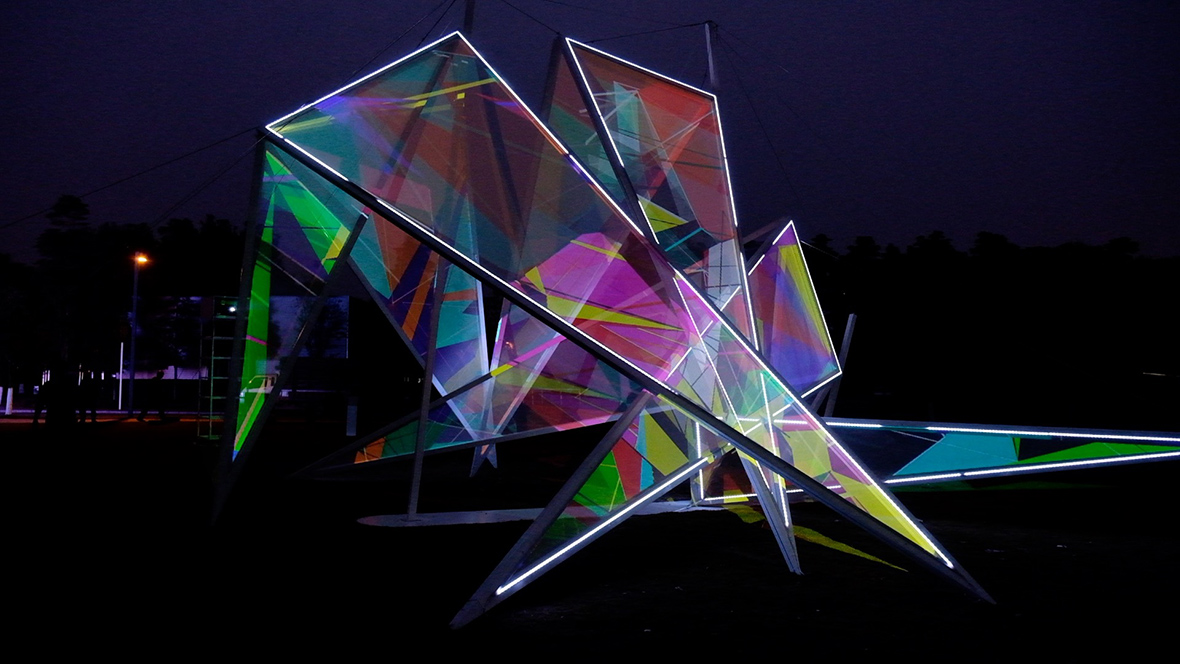
Stefan Reiss is Lumen Prize Finalist 2016 /2016 年英国流明数码艺术奖艺术家
What message are you looking to convey?
Thijs Biersteker: I hope this public artwork will re-connect people in cities to the voice of nature, putting us more in balance and interweaving us with what surrounds us and is part of us.
Stefan Reiss & Alexander Janke: In the first place, we created a work that can be experienced with the whole body and all the senses. The sculpture invites everybody to step inside and feel the dimensions of the kite. Next, we provide a link from traditional Chinese kite making to our Western interpretation of the kite. We also emphasize the development of the kite from a military invention to a civil use today.
Lien-cheng Wang: I want the public to see several paper-cutting styles. The lights, which seem to breathe, symbolize Bashu’s energy. And by wandering back and forth through the giant sculpture, the audience can experience anew the beauty of Sichuan’s intangible culture.
Guan Huijun: As curator, not only do we try our best to be good “narrators,” we also help international artists “interpret” Chinese culture, grafting together Chinese and foreign creative languages. This also reflects the founding mission of Here Your Art: to create groundbreaking, innovative digital exhibits and artworks, to try to break through the boundaries of conventional exhibits, works, and audiences, and to tear down the barrier between the audience and the art.
这次展览,你希望通过作品向社会和公众传递什么信息?
泰斯·比斯克: 我希望这个公共艺术作品能把城市里的人们和来自大自然的声音重新联系起来,使我们更加平衡,并与周围的事物交织在一起,成为我们的一部分。
斯蒂芬·瑞斯和亚历山大·扬克: 首先,我们创作了一部艺术作品,它能够体验整个身体和所有的感官——它邀请每个人走进去,与动画一起,从各个维度感受风筝;第二,我们建立了一个从中国传统风筝制作到西方对风筝的解释的关系;且还强调了风筝从军事发明到民用的发展。
王连晟: 我希望观众可以看到许多镂空剪纸风格的雕塑中,像是呼吸的灯光象征着巴蜀的活力。而透过观众在巨大的雕塑中穿梭、游走的方式,使大众再次注意到四川非物质文化遗产之美。
管蕙珺: 作为一个“策展人”,我们不仅仅力争做一个好的“叙述者”,也在本次展览中协助国际艺术家能够更好地“读懂”中国文化,嫁接中外不同的创作语言。这也体现了 Here Your Art 创立的使命——尽我们所能输出具有突破性和创新性的数码艺术展览及作品,试图打破常规展览、艺术品与观众的边界,破除艺术与大众的隔阂。
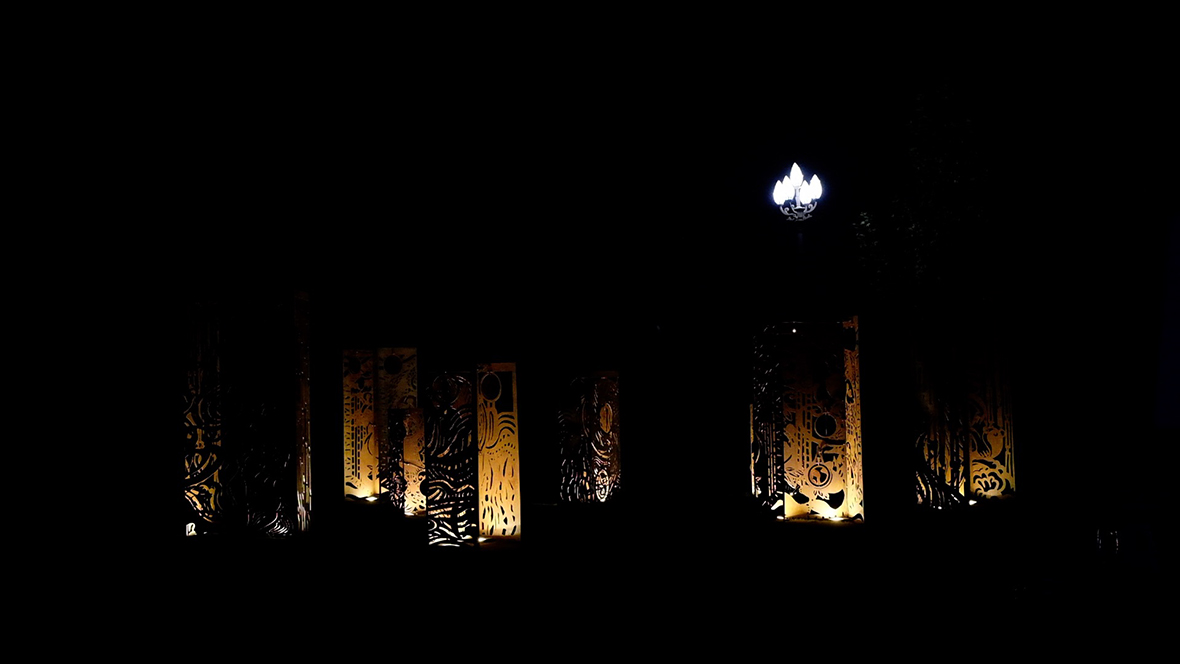
Lumen Prize Finalist 2017/2017 年英国流明数码艺术奖艺术家
What does this show mean for you?
Thijs Biersteker: I hope to work more in the Chinese market and together with Chinese artists and companies to create work that bridges the boundaries between people, nature, and innovative technologies.
Stefan Reiss & Alexander Janke: We think that Light Up Bashu has been a great opportunity to explore new fields of art and experiment with new technologies. O.T. 981 is an artistic milestone for us because we fused art history with modern technology in Chengdu. It’s also the first time we created a piece as an artistic duo.
Lien-cheng Wang: Intangible heritage is an important part of history. I think it’s the embodiment of modern culture and the legacy of the past. Tangible cultural heritage focuses more on the masterpieces of the past, and what I’m more interested in here are the early stages of a project. I’ve used several images of intangible culture to develop the art visually, and added modern technology.
Guan Huijun: What does this show mean to us? Our previous answers have made this clear. On a more concrete level, when residents wander over at dusk to see the works, the light in their eyes and the smiles on their faces mean a tremendous amount to us.
对你而言,你认为此次展览具有怎样的意义?
泰斯·比斯克: 我希望能在中国市场上创作更多作品,与中国的艺术家和公司一起创造出超越人、自然和科技界限的作品。
斯蒂芬·瑞斯和亚历山大·扬克: 我们认为,“巴蜀之光”是一个,要么探索新领域的艺术创作和实验的新技术。而《O.T. 981》这个作品是我们里程碑式的作品,我们把艺术史和现代技术融合起来;这也是我们第一次以二人合作形式创作的一件作品。
王连晟: 非物质文化遗产在历史中是一个重要的元素,我认为它是一种现代文化与过去传承的体现,与有形文化遗产不同,有形文化遗产更注重的是过去的人类辉煌的状态。而这次的作品我更在意的是前期的调研,我取用了许多非遗的形象来做为艺术品的视觉发展,并加入现代的科技去呈现。
管蕙珺: 对于这次展览的意义,我想前面两点应该说明的很清楚。一个更直观的表现就是,当周边居民黄昏时分散步闲逛到作品面前,眼睛中闪过的光亮与嘴角的笑容。
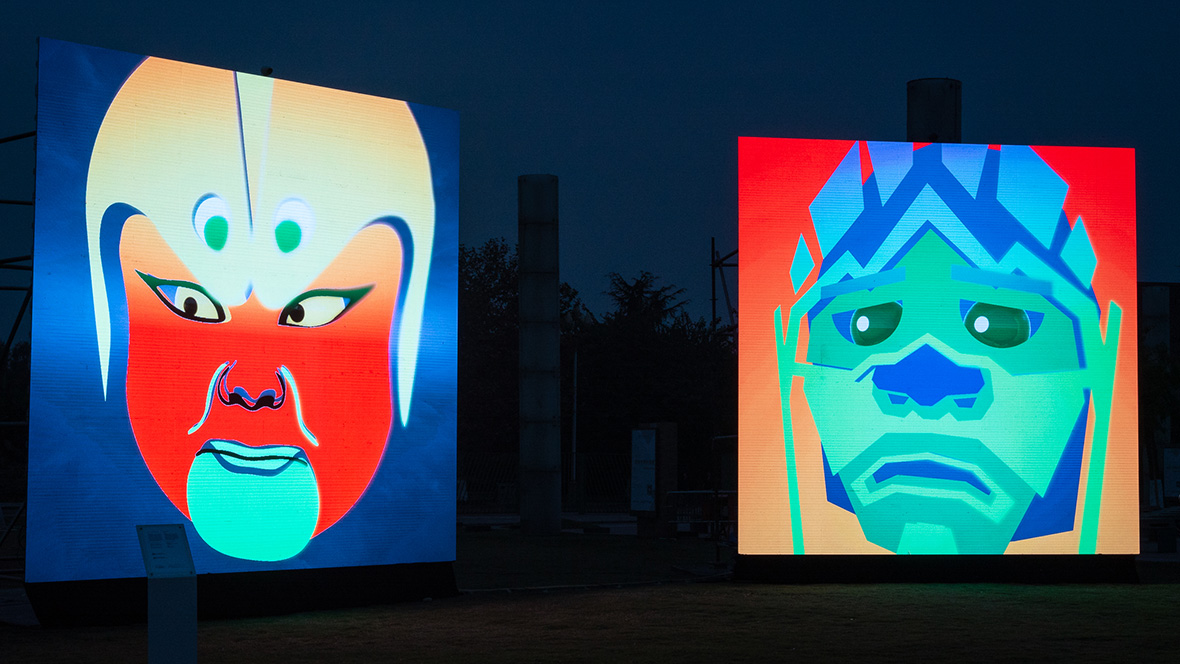
Lumen Prize Winner 2015/2015 年英国流明数码艺术奖冠军
Four short questions on new topics, new media, new work. Artists and curatorial teams may have different interpretations, but these artworks spanning media and fields all explore, in broad strokes or with minute precision, the interactive relationship between contemporary art and traditional culture.
Light Up Bashu Lumen Prize featured exhibition will run until December 3rd at Chengdu’s International Intangible Culture Heritage Park.
短短 4 个问题,涉及新话题、新媒介、新创作……虽然艺术家们和策展团队对主题和作品有着不同的阐释,但这些跨媒介、跨领域的艺术作品,都在或写意或细腻地表达着当代艺术与传统文化之间互通互激的关系。
本次展览在中国成都国际非物质文化遗产博览园举办,展期将持续至 2018 年 12 月 3 日。
Address:
601 Guanghua Ave. 2nd Section
Qingyang District
Chengdu, Sichuan
China
Website: www.hereyourart.com, www.lumenprize.com
Instagram: @here_your_art, @lumen_prize
Facebook: ~/hereyourartchina, ~/lumenprize
WeChat: hereyourart
供稿人: Chen Yuan
地址:
中国
成都四川
青羊区
光华大道二段 601号
网页: www.hereyourart.com, www.lumenprize.com
Instagram: @here_your_art, @lumen_prize
Facebook: ~/hereyourartchina, ~/lumenprize
微信公众号: hereyourart
供稿人: Chen Yuan

